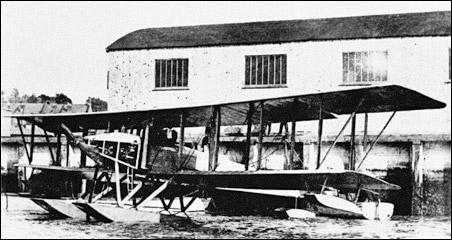| Grant Newman, e-mail, 15.09.2009 13:00 A few notes on the Sopwith Type C - and the Sopwith Special; These were actually two virtually identical designs built to two different contracts - the Type Cs were ordered in July 1914, whilst the 'Special Tractor Biplane Seaplane' was ordered first in February 1914. despite appearing after the Special, the Three Type Cs were allocated the RNAS serials 157 to 159 and the Special received the serial number 170. The photo above shows the Sopwith Special number 170.
The Special and Type Cs were the first purpose built British aeroplanes capable of carrying a torpedo, unfortunately they were not capable of lifting said torpedo into the air! The design was generally considered a failure because of this rather embarrassing character trait. In 1914 commander of the Calshot naval air station Cmdr Arthur Longmore of the Royal Naval Air Service and other RNAS pilots carried out torpedo carrying practice with 14-inch weapons in what Longmore described as the Sopwith Canton-Unné seaplane in August 1914 during experiments at Calshot. Its name was derived from its powerplant.
To Jay Honda: the aeroplane you might be referring to is possibly the Aeromarine Central Float Seaplane, which in outline resembled the Sopwith torpedo biplanes. None of the Sopwith designs were exported. reply |











